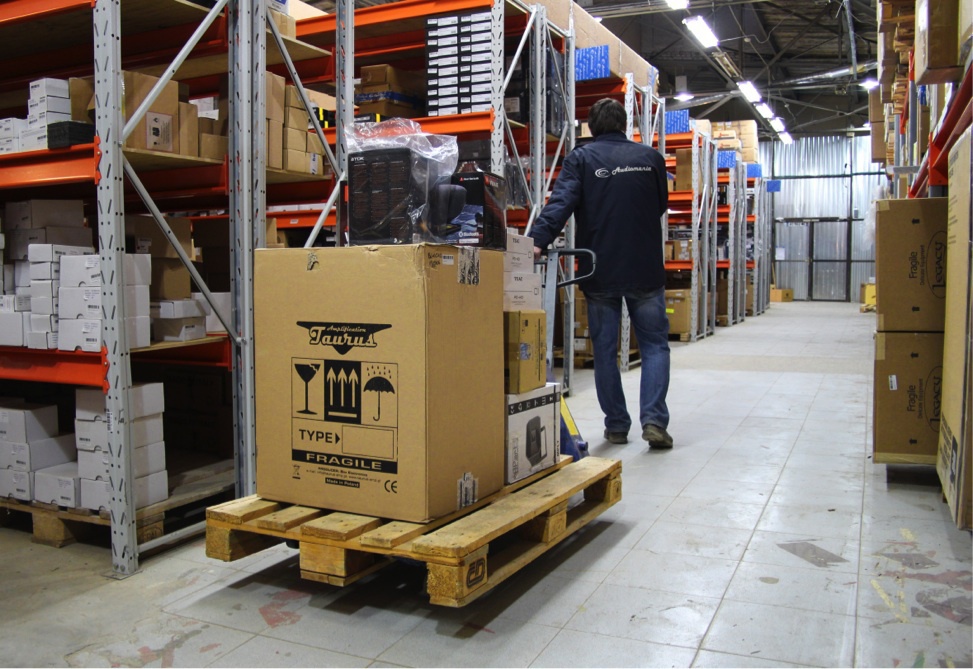eCommerce for newbies

From the translator: this translation is intended for those who make the first steps in the field of e-Commerce or are only thinking about creating a business in this area. Here, quite large strokes outlined what is worth starting and what is desirable to think about at the beginning of this great (and, of course, interesting) way. We decided to add to the material a few links to our articles and translations - they can be accessed to learn more about a number of issues raised in this topic.
Perhaps recently you have already thought about creating a business in the field of e-commerce, like many others. And this is not surprising, given the increase in sales in this area by 12% in the US in 2013 alone. This means that total revenues from such sales amounted to about $ 296 billion. By the way, the e-commerce industry in India also expanded by 30% compared with the previous 2013 year. Now there is a share of the money raised through e-commerce is $ 12.6 billion.
')
You can read about what features characterize American e-commerce in our post “ What Russian e-Commerce Can Learn from American ”
Looking at the numbers listed above, you can decide that this industry is too big to make sense for you to engage in such activities, but this is simply not true. In fact, it will be easier for you to open your business and start selling products, precisely because this market is so large. Yes, there is competition here, but there are also a huge number of buyers who are browsing the products offered in online stores with a wallet at hand.
This article will tell you how to start an e-commerce business from scratch, creating a solid base so that your business grows and develops properly. We will not go into more complex processes, such as sales organization and logistics, because they are not the main problems at the start.
Beginning of work
E-commerce is one of those types of business, in which it is easiest to open a business, because here you will not encounter any special obstacles. You do not need big capital, you do not need a website for $ 10,000, there is no need to spend $ 4,000 every month for non-production costs and you don’t even need to have a warehouse. We will discuss the topic of the warehouse in more detail later.
Of course, the tips that follow are fairly universal, but if you are interested in regional features of e-commerce, we recommend you to refer to our publication “ 7 factors for the success of an online store in Runet ”.
The first thing you need to do is to define your goals in e-commerce: do you want to open a kind of “shopping center” and sell everything you reach? Or would you rather create a specialty store, focusing on meeting the specific needs of society by selling your products?
“Shopping centers” have more chances of success when trading on a large scale, and there is a constant risk of failure if you do not have a lot of capital to invest, do not have the resources to conduct high-quality marketing research and the like. Also in this case, it takes much more time to purchase a large assortment of goods from reliable suppliers.
The best option for you at the very beginning will be the choice of a particular specialization, or niche, in other words. This is a small part of the market in which you will strive to occupy a leading position as an expert in this field. Examples include riding equipment, equipment for scooters, original motorcycle helmets, printing on T-shirts or toys for children from 3 to 6 years old. Choosing a niche, you significantly increase the chance of success, and also greatly simplify the search for suppliers, sales management and logistics.
You will need to find reliable suppliers to trade quality goods. Look for suppliers working in your field and learn what they offer. If you are purchasing a product from another country, you should study the import rules and the import duty system. If you do not want to contain too much storage space, then you will also find a direct delivery system, in which you, in essence, buy goods from a supplier only when a customer places an order with you. Thus, the absence of risk makes this option quite suitable for you in the early stages.
How we created and optimized our warehouses ourselves can be found here: 1 , 2 . And about what to do if the goods selected by the buyer are not in stock (with examples), we have told here .
So, after you have decided on what you want to sell, the next step is to think about where to sell. You shouldn’t worry too much about this, as e-commerce is a large industry today, and there are dozens of places for sale where you can place your goods, even with a limited budget or without it!
Creating a highly professional brand
When you create a brand, at the expense of e-commerce platforms and / or marketplaces, you should have a regular customer audience, as well as sufficient capital. You should use this capital to re-invest in your online business, thereby increasing your sales and developing your online trading activity as a whole.
The first thing that needs to be done is to present yourself correctly on the Internet, which will require the development of a specialized website for the sale of goods. Creating an e-commerce site is not an easy task, so the best thing is to hire a web designer — don't try to create a site yourself. Ask him to use a site development platform. They allow you to make small changes yourself without the help of a web designer, and you will thus avoid future costs.
Your logo and brand design are also important factors to consider. It depends on them with which customers will associate your products. Hire a professional graphic designer and have him / her develop a beautiful logo that perfectly reflects the characteristics of your business.
Drawing up a unique sales offer (UTP)
When your company becomes more famous, you will need to think about a unique selling proposition (USP). It is easy from time to time to sell a certain amount of goods, but to expand its activities and thereby increase sales and revenues is much more difficult, and this requires more careful planning, preparation, and more intensive work.
About what to do if you are selling a unique product, but you want to create a unique sales proposal, you can read in this translation .
Your UTP is what sets you apart from your competitors; this is the reason your customers will buy products from you instead of them. In drawing up the USP, it is necessary to think about the shortcomings of the industry and how they can be corrected. This may include extending the warranty period, shortening the delivery time, improving customer support, or compiling detailed product catalogs that will help customers purchase exactly what they need.
Many e-commerce firms choose price as their UTP, and, in most cases, this affects them negatively. Buyers who are looking for the cheapest product are most likely not the customers you need. There is a possibility that you still do not have enough capital because you want to purchase goods at a low price, which requires massive purchases. Moreover, if your store does not specialize in selling discounted goods, your customers will go to another place as soon as someone offers cheaper items.

Tracking important information and key indicators
It is very important to keep track of relevant information and key indicators, as this will help improve the efficiency of your work and cope with any future difficulties. Analyzing information means to objectively evaluate your business. You simply can not argue with the data if they are in front of your eyes.
The most accessible key indicator that will be most easily tracked is the conversion rate. It shows the number of users who bought your product relative to the number of all visitors to your online store. For example, if 1,000 people visited your site, but only 20 of them made purchases, then the conversion rate would be 2%.
Another noteworthy indicator is the cost of customer acquisition (SPK or CAC, Cost of Acquiring Customer), which reflects how much money was spent to convince customers to buy something from your online store. For example, if you spent $ 2,000 to convince 50 visitors to buy something from you, then the CAC value would be $ 40. The smaller this figure, the better.
The indicator of the number of “abandoned shopping carts” is also important, since it reflects how many visitors were going to buy goods from you, that is, the number of your potential buyers. Try to keep this figure as low as possible - a high value of this indicator may mean that your website needs some work.
The average order value (CVD or AOV, Average Order Value) is the average amount of money one customer spends making purchases on your site. You need to try to constantly increase this figure, for example, by assigning discounts for bulk orders or additionally offering various related products or something similar. Amazon makes excellent use of these techniques by placing links in the "Users who buy this product section also buy ...".
Customer value during its life cycle (LTV, Lifetime Value) is considered the most important indicator in e-commerce. It reflects the total amount of money spent by one customer minus the cost of his attraction. Thus, if, for example, a customer re-enters your online store four times and spends a total of $ 600, then the LTV value will be $ 560, provided that you spend $ 40 to attract it.
By tracking the information and key indicators mentioned above, you can know exactly how successful your Internet business is at any stage. This can be very useful when you start planning for business expansion, increasing the product range, increasing revenue, providing more traffic to your site, and the like.

Source: https://habr.com/ru/post/375533/
All Articles